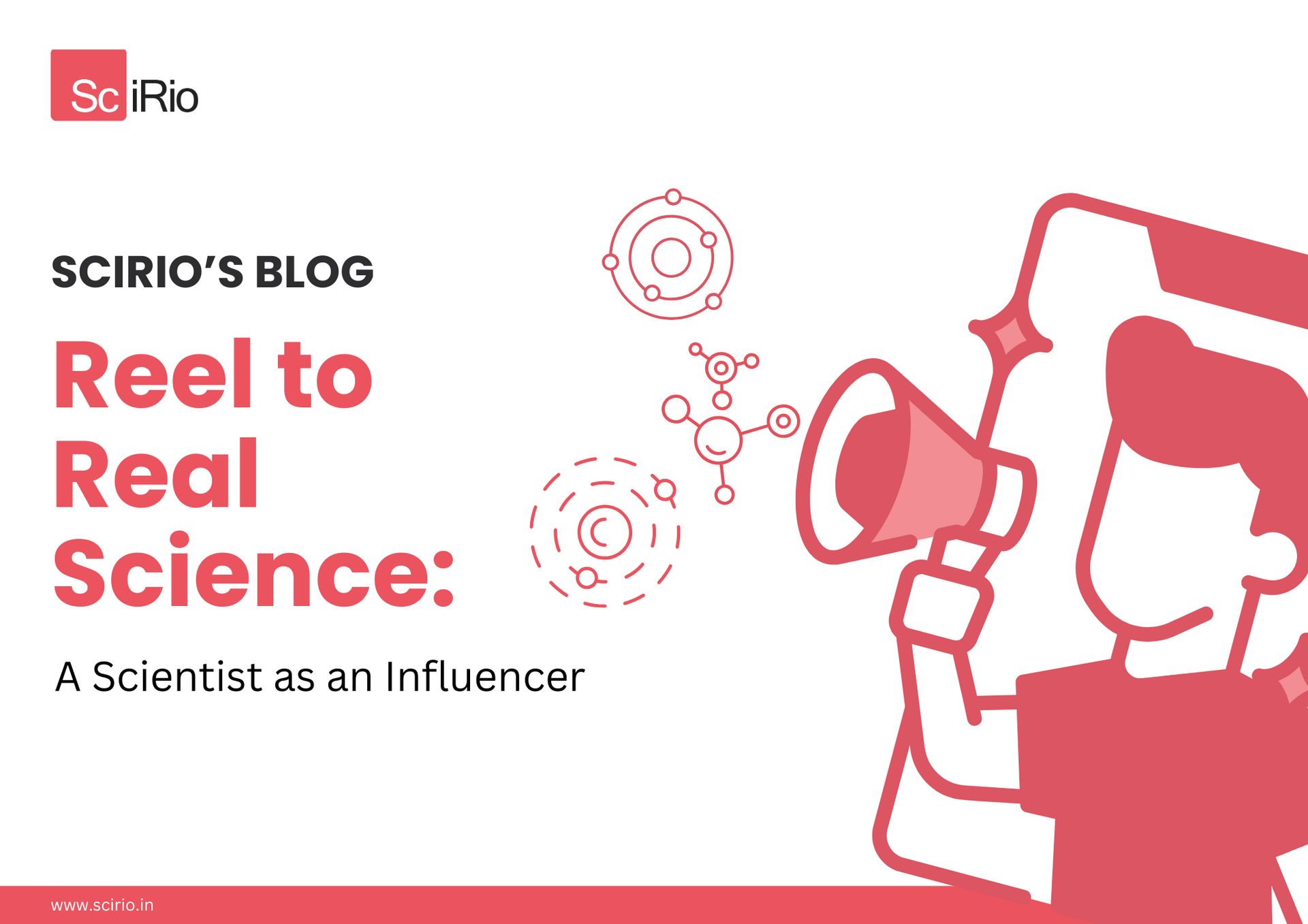- The Science Content Lab
- Posts
- From Content to Movement: Creating Blue Ocean Science Communities
From Content to Movement: Creating Blue Ocean Science Communities
How science brands evolve from broadcasting to belonging — building communities that co-create insight, not just consume content.
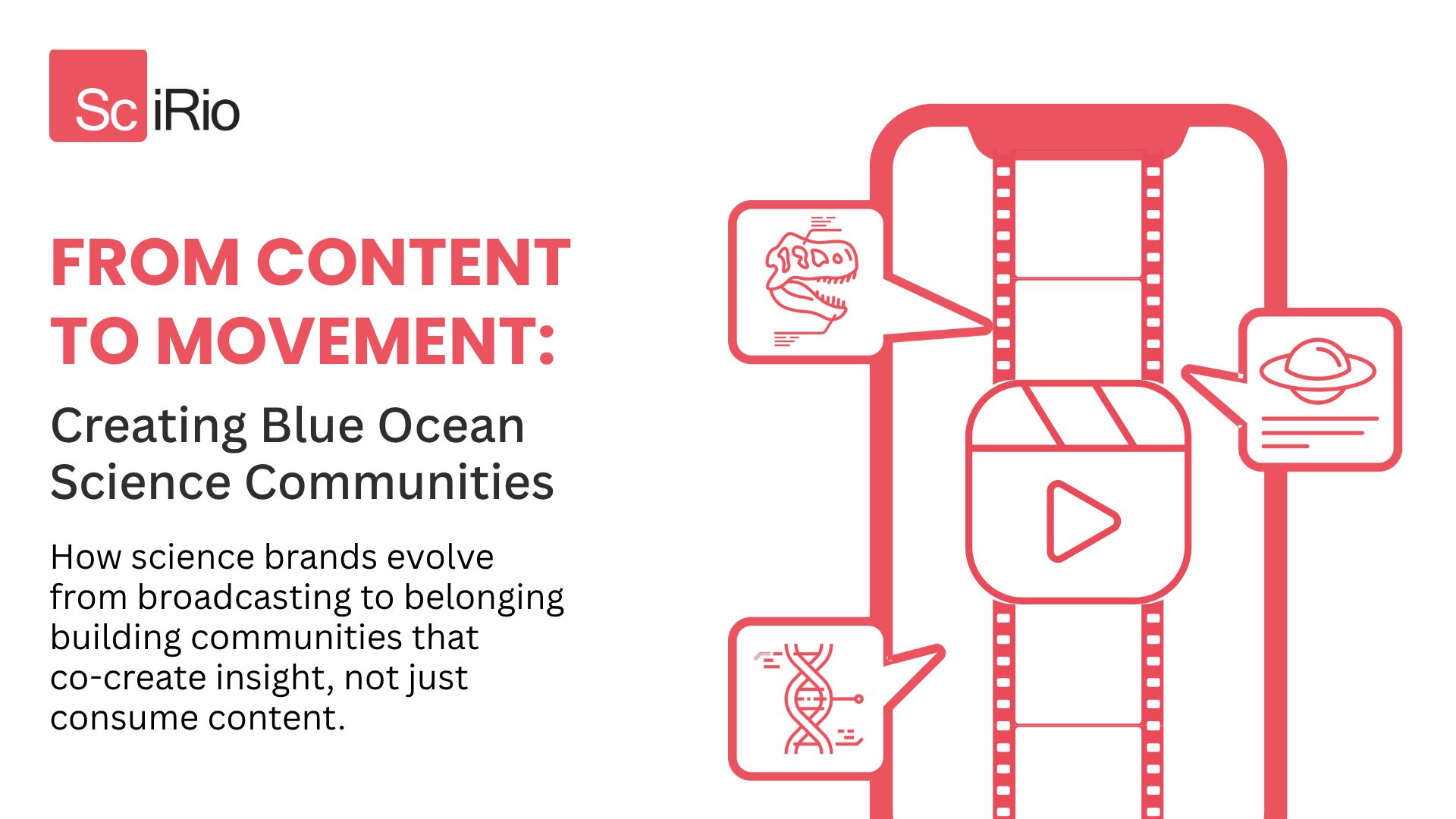
Welcome, reader!
The Shift from Broadcast to Belonging
Many science and technology teams still rely on one-way content streams — blogs, white papers, and email blasts. A stronger alternative is emerging: a Blue Ocean model where content becomes infrastructure for co-creation, conversation, and community growth.
In business strategy, the terms “Red Ocean” and “Blue Ocean” come from the book Blue Ocean Strategy by W. Chan Kim and Renée Mauborgne.
Red Oceans represent crowded, competitive spaces — organizations fight over limited attention with similar content formats (e.g., blogs, white papers, newsletters).
Blue Oceans represent open, collaborative spaces — organizations create new value by designing shared ecosystems rather than competing for clicks.
In science communication, Red Oceans look like one-way information streams: we publish, they read.
Blue Oceans look like co-created ecosystems: spaces where researchers, clinicians, and audiences exchange insight, annotate findings, and collectively evolve narratives.
When content becomes infrastructure for collaboration, you don’t just grow followers — you grow belonging.
Featured Insight: Why Ecosystems Outperform Broadcasts
Monologue → Dialogue. Replace static posts with discussion spaces (forums, AMAs (Ask Me Anything)) that invite questions and annotations.
Fixed outputs → Emergent outcomes. Treat your hub as a living system (dashboards, notebooks, repositories) that evolves with community input.
Audience → Co-authors. Invite remixing, corrections, and method notes so knowledge can improve in public.
CTA: Turn your next webinar into a co-creation sprint: end with prompts, assign micro-tasks, and publish a community-authored recap.
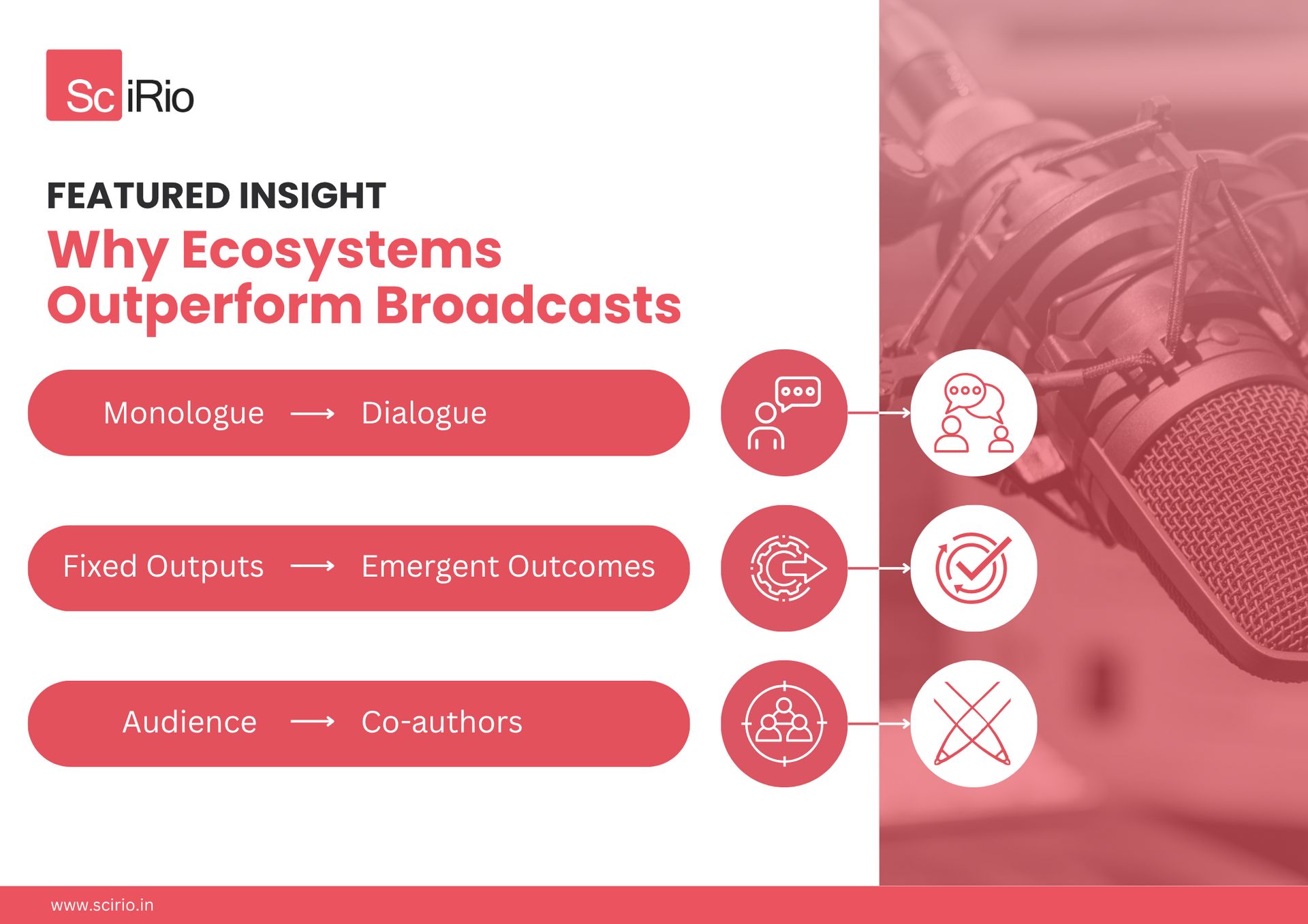
Innovation Showcase: Verified Examples of Collaborative Infrastructure
Medtronic — Conversations that Extend Beyond Broadcast
Ongoing dialogue via podcast: MedtronicTalks is Medtronic’s interview series with engineers, clinicians, and leaders, sharing lessons across therapies and business units.
Live “Tech Talk” sessions: Medtronic is also running Tech Talk events (e.g., at WE25), mixing presentations with Q&A (WE25 program listing; broader event details at SWE WE25).
Why it matters: Podcasts and live Q&A create recurring touchpoints with practitioners — a step toward communities centered on shared problem-solving.
Ginkgo Bioworks — Codebase + Foundry as Shared Knowledge Engine
Platform foundation: Ginkgo’s Foundry and Codebase combine automated DBTL (Design–Build–Test–Learn) workflows with extensive biological & genomic databases to accelerate new programs (Ginkgo platform overview).
The “biological codebase” concept: Ginkgo discusses Codebase as reusable design knowledge for engineering biology (see the Foundry Theory explainer: “The Biological Codebase at Ginkgo Bioworks” and a capabilities brief describing Foundry+Codebase as enablers of rapid prototyping, DBTL, and parts reuse: PDF).
Why it matters: While not a public co-authoring community, this model shows how shared repositories of data, parts, and results compound learning across programs — the same logic your external community hub should emulate.
Open Data Commons as Community Hubs
NIH/NCI exemplars: The NCI Cancer Research Data Commons provides cloud-based access to large, governed cancer datasets and tools for analysis (CRDC site; Cancer Research 2024 paper)
Data-commons principles: A 2023 paper clarifies that a data commons co-locates data, compute, and software with governance for community use (Nature Scientific Data, 2023).
ELIXIR (Europe): ELIXIR coordinates FAIR life-science data resources and communities to drive re-use across Europe (ELIXIR data platform; community standards/context in Harrow et al., 2021).
Why it matters: These show how governed, shared infrastructure enables multi-stakeholder science — the backbone of a Blue Ocean ecosystem.
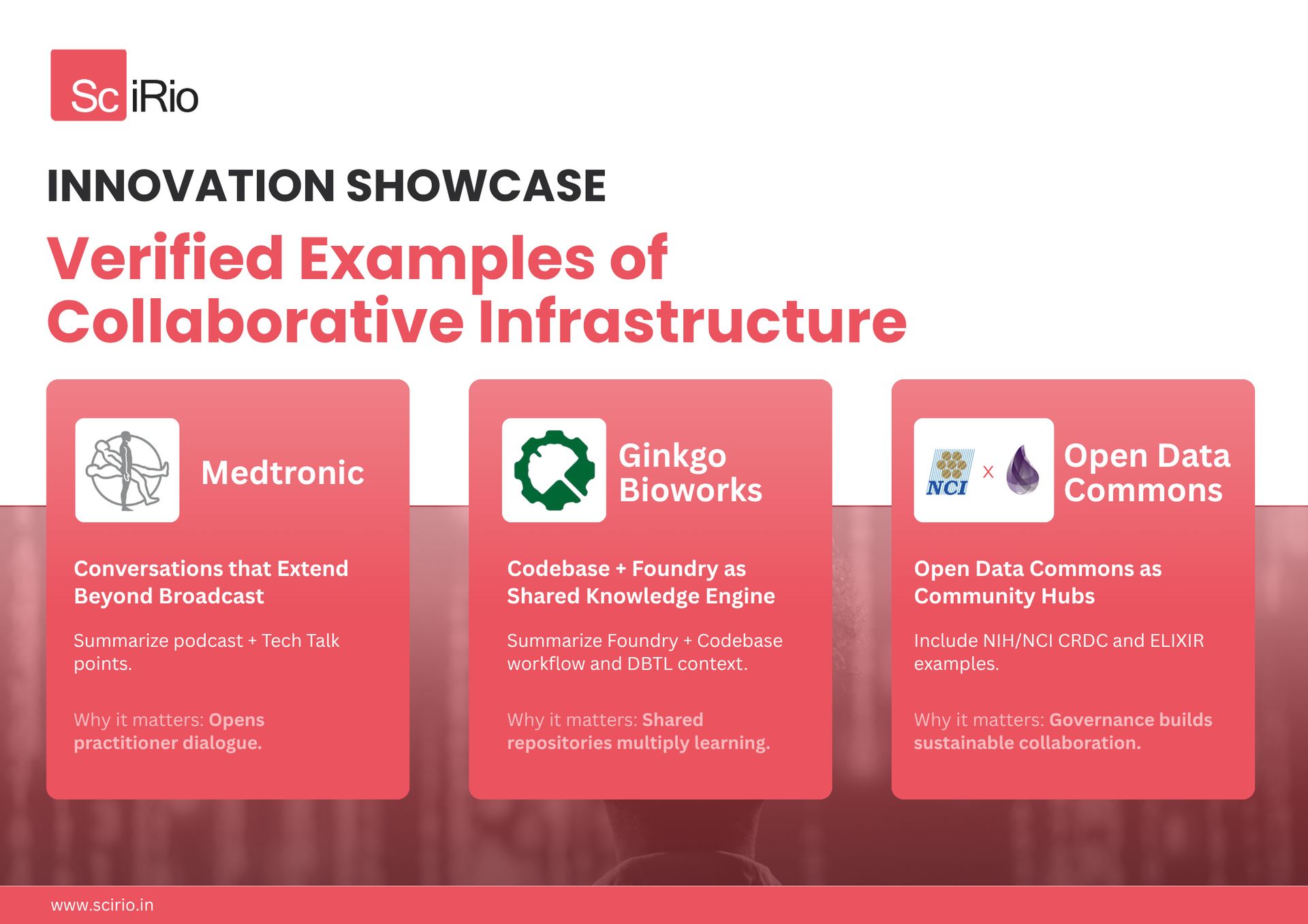
Practical Tools: Build the Community Stack
Discussion hubs: Circle, Mighty Networks, or Discourse for threaded, topic-based dialogue.
Interactive analysis: Observable, JupyterHub, or Streamlit for shared, explorable notebooks and dashboards.
Living knowledge bases: Notion or Coda for versioned methods, summaries, and contributor credits.
Events that loop back: StreamYard or Riverside for AMAs/webinars that feed annotated recaps and next-step prompts into your hub.
AI helpers (with governance): Summarizers and Q&A copilots can surface patterns and FAQs; pair with clear review policies and bias checks.
CTA: After every event, publish a community-authored method note (who added what, open questions, next experiments).
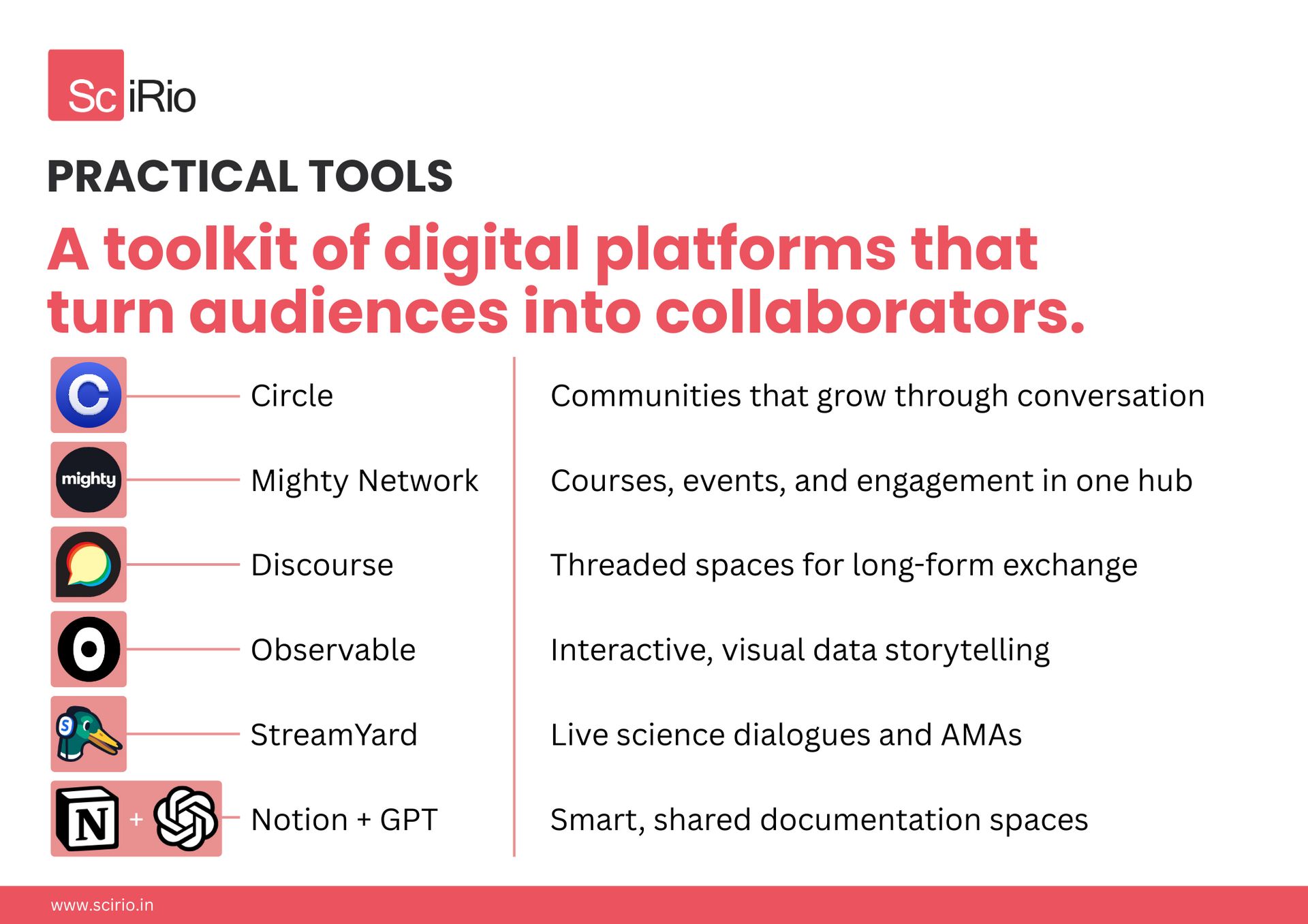
From the Field: Practices You Can Implement Now
Start focused. Begin with a small, clearly defined group before scaling your community. A tight focus builds trust and rhythm before you open the doors wider.
Ask better questions. Lead with prompts that invite reflection, not just reaction.
Make contributions visible. Add a “Contributors” block to every shared artifact so people see their input reflected.
Encourage annotation. Use shared docs or dashboards where readers can comment, clarify, or expand on insights.
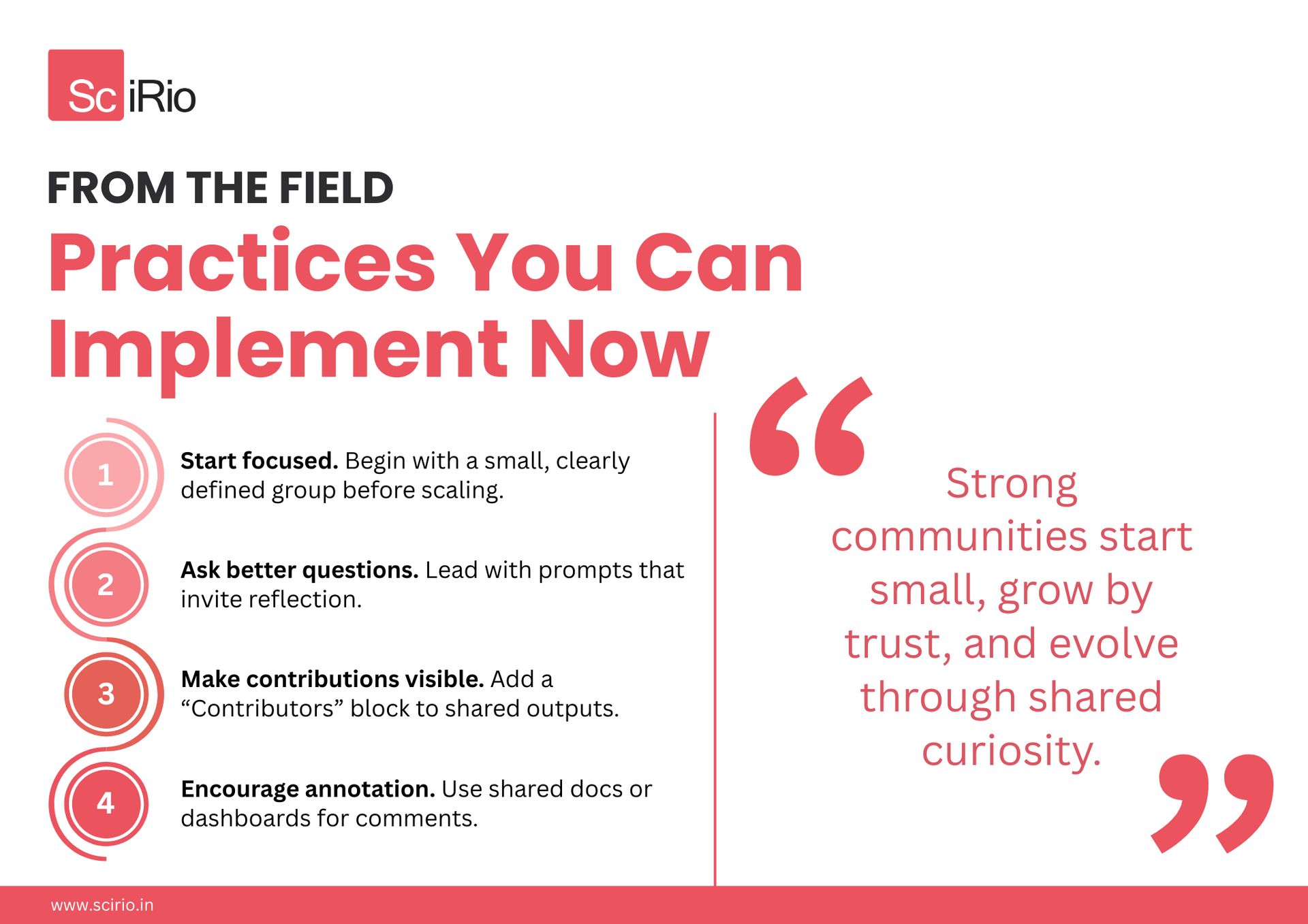
Behind the Scenes: The Content → Movement Workflow
At SciRio, we believe that the future of science communication lies in treating content as a living system, not a static artifact. When we imagine how knowledge can move across teams, disciplines, and audiences, we see a workflow built on curiosity, collaboration, and iteration.
In an ideal ecosystem, every science story would begin with a core question rather than a headline. That question would shape who joins the conversation, bringing together subject experts, designers, communicators, and practitioners who offer complementary perspectives.
From there, we would design a minimal and flexible hub where these perspectives could converge. This space would allow for annotation, reflection, and synthesis. We see this as a visual and narrative process: ideas mapped, patterns revealed, and insights evolving into clear visual forms such as dashboards, diagrams, or insight cards.
Each cycle would end with a pause for reflection, a moment to validate what emerged, identify what is missing, and plan the next iteration. Over time, these feedback loops would make science communication less about broadcasting and more about shared sense-making.
In our own work, we use this model as a guiding compass. It reminds us that the most effective science storytelling is not a one-way stream. It is a carefully designed system that helps meaning move, adapt, and deepen with every iteration.
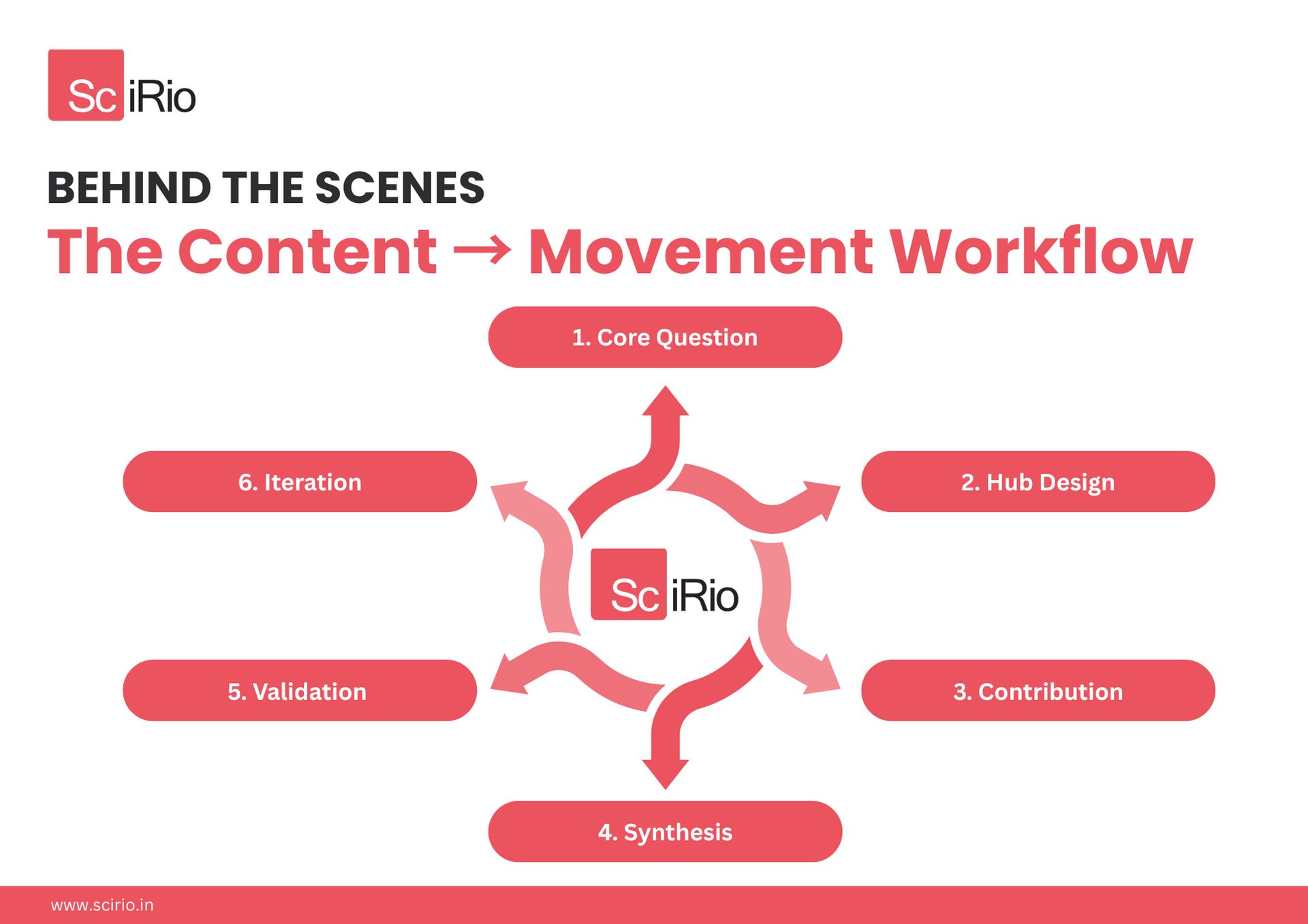
Community Corner: Models & Platforms to Watch
We’re spotlighting science teams turning content into connection.
If your lab, startup, or organization is building a Blue Ocean — a space where audiences co-create knowledge, share data, or host participatory storytelling — we’d love to hear from you.
Email us your example — a few lines about what you’re building and what you’ve learned. Selected stories will be featured in our next issue (with credit, of course).
Missed our last issue? Read it here.
Subscriber Bonus: “Content → Movement” Canvas
Use our Content → Movement Canvas to turn your communication plans into evolving ecosystems. The template helps you map how ideas move from initial questions to shared outputs and next steps.
Sections include:
Core Question – What are we trying to understand or communicate?
Stakeholders – Who holds relevant knowledge or context?
Prompts – How can we invite contributions or reactions?
Synthesis – What shared patterns or insights are emerging?
Validation – What needs refining or testing?
Next Steps – How do we extend this conversation?
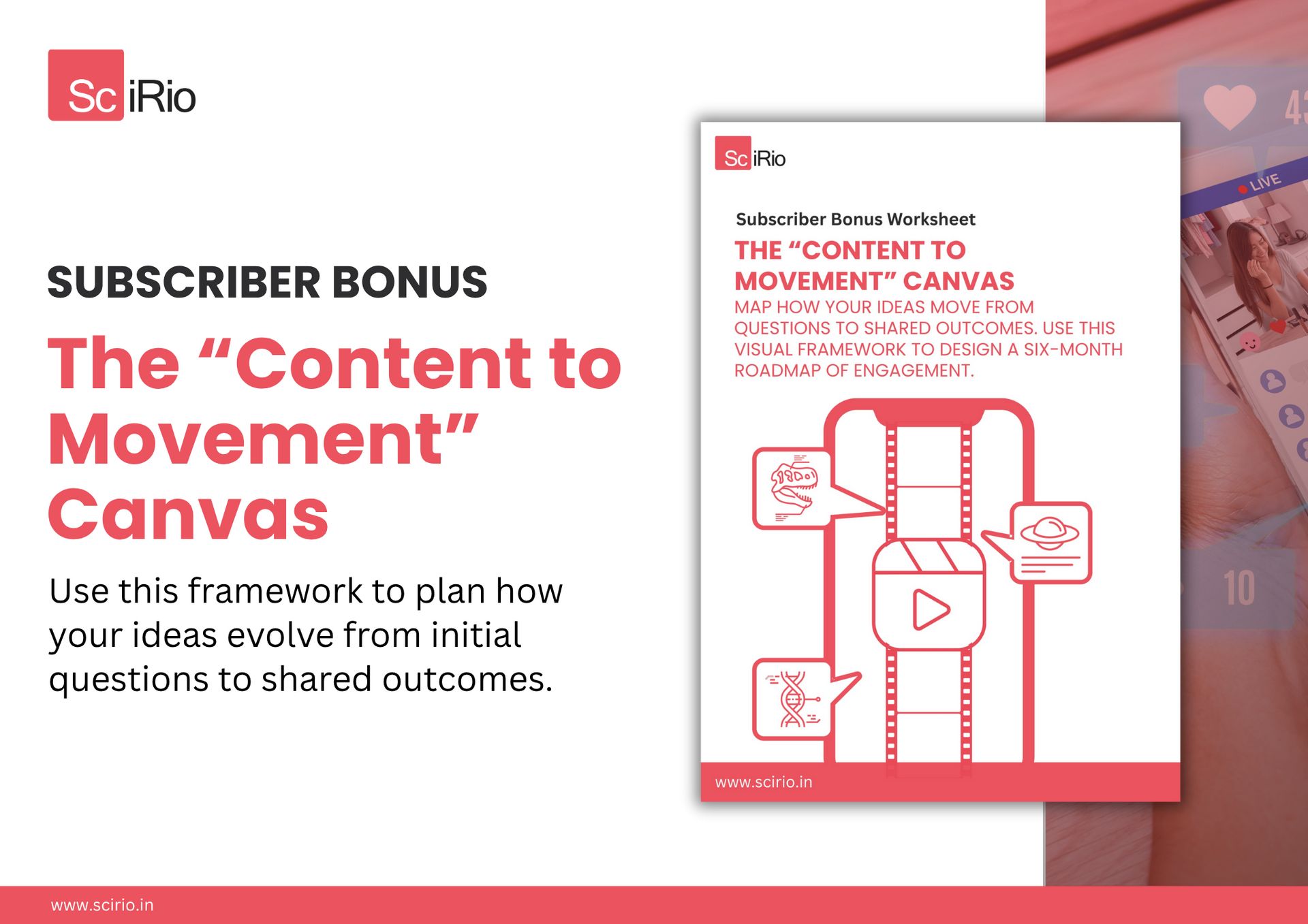
Final Word: The Communicator as Ecosystem Architect
Your role isn’t just to publish — it’s to design spaces where science, stakeholders, and story co-evolve. Build the rooms, set the rituals, and let the community help write what comes next.
SciRio’s blog
Social media is shaping how the public understands science, but what happens when scientists step into the influencer space? In this feature, Rutuja Ugale explores how research professionals are redefining influence — turning platforms like Instagram, X, and podcasts into tools for trust-building and scientific literacy. From virologist Dr. Gagandeep Kang to “The Liver Doc” Dr. Abby Philips, discover how these voices are bridging the gap between the lab and the public conversation.
Read the full story: Reel to Real Science: A Scientist as an Influencer
